The hype leading up to Kajola’s release was insane. Hundreds of excited moviegoers queued for tickets at Silverbird Cinemas Abuja for the premiere of the film that had promised an action-packed dystopian sci-fi saga set in Nigeria, all made possible by groundbreaking CGI. But almost 30 minutes in, people began storming out. Some approached the ticket handlers and demanded refunds. The movie’s director had expected this might happen. It didn’t make it any less heartbreaking.
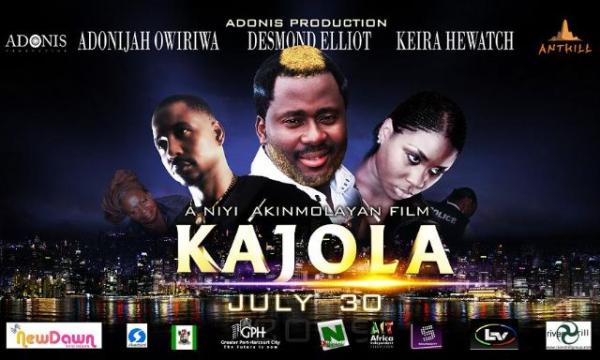
In 2008, an aspiring filmmaker named Niyi Akinmolayan decided to make a movie. Depressed after a recent robbery incident and influenced by the works of Tunde Kelani, Niyi wanted his film to be a metaphor for society. He noticed at the time that there was a lot of ongoing development on Lagos Island and very little on the mainland. He began writing a dystopian sci-fi epic where a civil war has destroyed most of Lagos, destroying the third mainland bridge, causing the elite to migrate to the Island and start a new government. The survivors on the mainland are left to live in poverty. He named it The BlackHole. This would be his directorial debut.
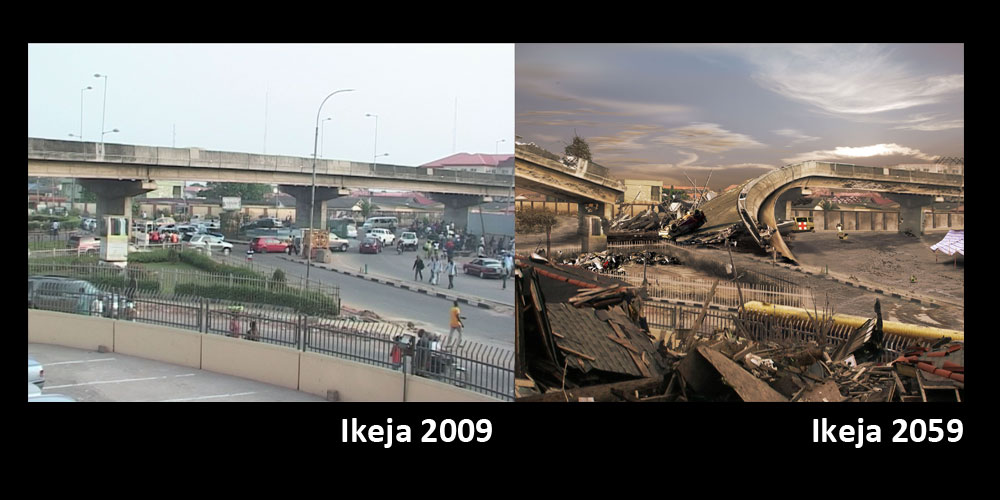
Shots from the movie portraying a destroyed Lagos mainland.
Niyi had started a production company (Anthill Productions) in 2007 with a few friends who shared his passion for animation. They had also lost everything in the robbery with Niyi and decided to work with him on this project. With N400,000 (Niyi’s savings), a borrowed camera, and a lot of greenscreens, they set out to make the greatest Nigerian movie ever.

A CGI robot from the finished movie.
Niyi met Adonijah Owiriwa, the actor who would go on to play the movie’s protagonist, in a music studio in Port Harcourt. Niyi was there to discuss the movie’s score when Adonijah, a producer at the same studio, overheard their conversation. He expressed interest in auditioning for a role, which Niyi didn’t take seriously until 3 months later when the production had run out of funds. He called and begged for an audition while also promising to help them with whatever they needed. He auditioned and got the lead role. Niyi and his team got the money they needed.

Principal photography had begun at this point. The movie was to be 90% green screen.
It was suggested they get a star to play the main antagonist. After negotiations with a few actors fell through (Van Vicker and Eedris Abdulkareem), Desmond Elliot was approached and he signed on as soon as the movie’s premise was explained. Since the movie was mostly green screen, Adonijah (who had become the production’s benefactor) suggested the crew move to Port Harcourt to finish principal photography. He rented a house for them with 24/7 electricity. He was optimistic about the movie’s chances. They all were.
It was when the time came for post-production that Niyi realized he had greatly underestimated what it took to make a movie like this.
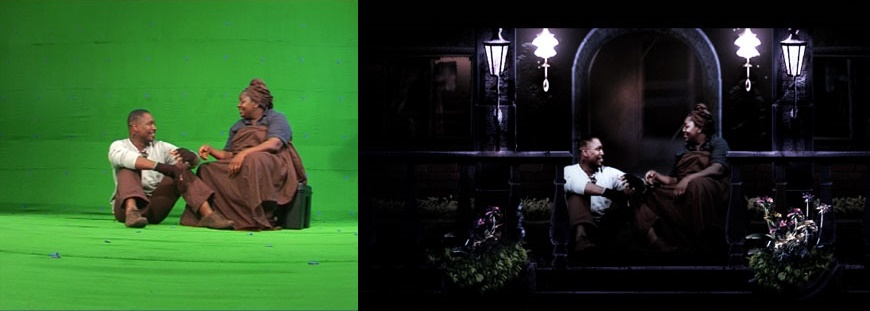
A before and after shot from the movie portraying the protagonist, Allen, having a conversation with his mother on the doorstep of their home.
The special effects meant to sell his movie looked terrible. The CGI sequences written into the script were too complex for the equipment they had available
At this point, word had gotten out about the work being done and excitement was in the air about Nollywood’s first big-budget sci-fi action movie. Adonijah suggested a teaser be put out to get more people talking so they did and sent it to Silverbird. The people at Silverbird, impressed by the little they’d seen, agreed to run the teaser without payment. Ben Murray-Bruce himself called Niyi on the phone to commend the good work and to offer the free use of his Abuja cinema for the premiere. To have all this hype for a first project would be any filmmaker’s dream, but for Niyi, it was a nightmare. All these people had invested so much in what they believed was going to be Nigeria’s The Matrix but he knew what he had didn’t even come close.
Niyi and his team realized there was nothing to do at this point but to jump on the hype surrounding the movie and release it. They decided on Friday the 30th of July 2010 as the date for the premiere.
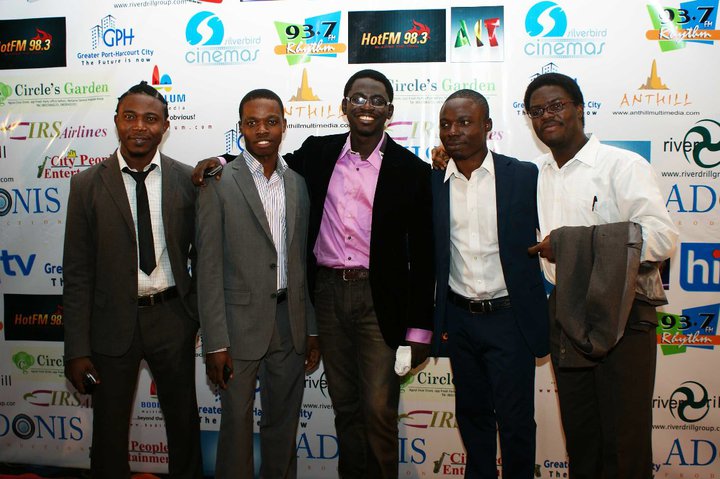
The Kajola post-production team at the premiere. From L-R: Rume Omojituko (music), Charles Paulinus (Motion graphics), Niyi Akinmolayan (Director), Bode Adewole (Matte Painting), and Bisi Adetayo (3D animation)
Opening weekend was a mess. The reviews were scathing, and the movie got pulled from cinemas two days after it premiered. Niyi stayed away from the public eye for two years to avoid humiliation but this didn’t help because angry people who had paid to see the movie found his social media accounts and insulted him there.
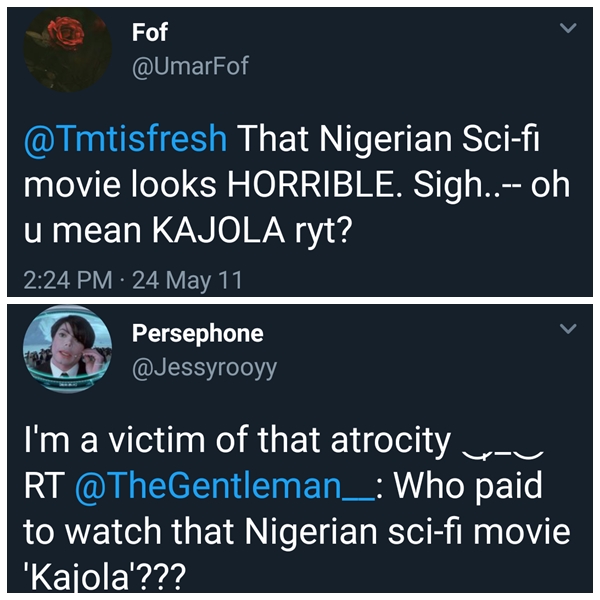
A lot of people look back on Kajola and see it as that N130 million disaster but it was so much more than that. It inspired upcoming filmmakers who, mentored by Niyi, went on to make their own sci-fi short film. Kajola might have been a failed experiment but its mistakes taught the original members of Anthill Productions the dos and don’ts of filmmaking, and since then, almost all of them have gone on to do great things.
As for Niyi, he’s gone on to become a prolific filmmaker, directing critically acclaimed movies like Make A Movie (2015), a Nigerian dance musical film; The Adventures of Lola and Chuchu, a 3D animated series; The Arbitration (2017), a Nigerian romantic movie currently available on Netflix; and The Wedding Party 2 (2017), which is currently the highest grossing Nollywood movie of all time.

A classic example of a massive failure being a stepping stone to greatness.
If you never saw Kajola, here’s the trailer:




